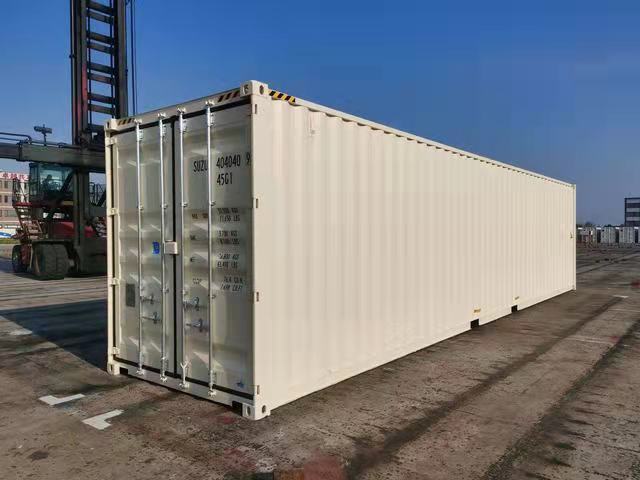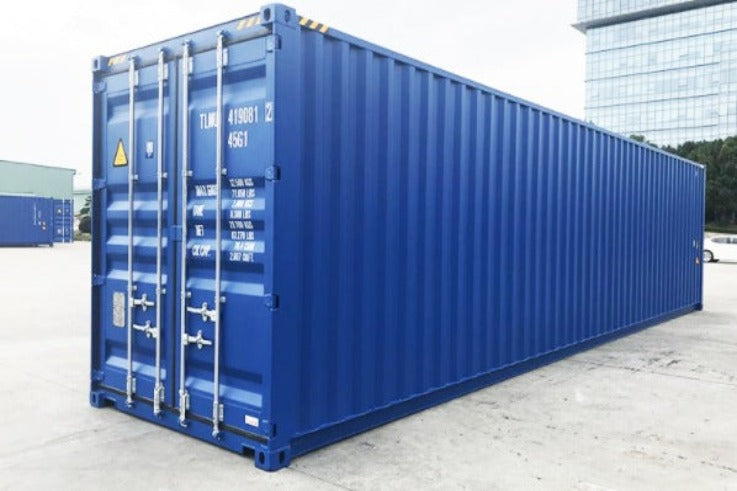Why You Shouldn’t Wait to Shop New Shipping Container 40 x 8 x 9.6 for Disaster Relief Projects
Why You Shouldn’t Wait to Shop New Shipping Container 40 x 8 x 9.6 for Disaster Relief Projects
Blog Article
The Ultimate Overview to Picking the Right Shipping Container for Your Demands
When it involves picking the ideal shipping container, understanding your specific needs is vital. You'll intend to take into consideration elements like size, kind, and product to ensure you make the most effective option. From basic dimensions to specialized alternatives, there's a great deal to discover. And also, budgeting for both the container and any type of alterations can make a big distinction. Allow's break down the crucial facets to help you discover the best suitable for your requirements.
Comprehending Delivery Container Sizes
When you're choosing a delivery container, comprehending the numerous dimensions available is important for making the appropriate decision. Shipping containers normally can be found in basic sizes of 20 and 40 feet, yet you'll also find other measurements. Recognizing the dimension you require relies on what you plan to store or transport.If you're relocating smaller things, a 20-foot container may be optimal, while larger deliveries typically call for a 40-foot container. Remember that the elevation can likewise vary; high cube containers provide extra upright area, which can be beneficial for taller goods - New Shipping Container 40' x 8' x 9’6".Before making a decision, gauge your freight, and think about exactly how much space you'll require for packing and unloading. Constantly variable in potential future needs-- selecting a slightly larger container may save you trouble down the line. Eventually, selecting the ideal dimension will improve performance and assure your things are secure throughout transit
Sorts Of Shipping Containers Available
There are several kinds of delivery containers offered, each developed for particular purposes and cargo requirements. The typical dry container is functional, best for basic freight. If you're delivering disposable products, take into consideration a chilled container, which maintains a controlled temperature level. For large items, high cube containers supply added elevation, suiting taller loads.If you need to carry hefty equipment or equipment, level shelf containers provide a tough base without walls. At the same time, open-top containers enable simple loading of high cargo, with a detachable tarpaulin covering for defense. If you're trying to find versatility, think about a retractable container that can be quickly saved when not in use.Lastly, specialized containers like tank containers are utilized for fluids, while vented containers are developed for bulk cargo that needs ventilation. Knowing your freight type will help you choose the best container to fulfill your delivery requires successfully.
Material Factors To Consider for Toughness
When choosing a delivery container, the material plays an essential role in its durability. You'll intend to consider the benefits of steel versus light weight aluminum, especially relating to corrosion resistance. Comprehending these elements can help you make a more educated option for your shipping needs.
Steel vs. Light weight aluminum Containers
Exactly how do you select in between steel and aluminum containers for your shipping requires? Start by taking into consideration toughness. Steel containers are durable and offer superb toughness, making them suitable for hefty loads and rough conditions. They stand up to damages from impacts and are commonly less expensive, which can be a major element for budget-conscious buyers.On the other hand, aluminum containers are light-weight, which can save you on delivery expenses. They're much easier to navigate and are a fantastic selection if you require to deliver items regularly. Nonetheless, light weight aluminum is normally extra pricey and less robust than steel. Weigh your certain needs very carefully, consisting of weight, price, and the type of cargo you'll be shipping, to make the best choice for your scenario.
Deterioration Resistance Factors
Picking the best material does not just include weight and cost; corrosion resistance plays a substantial duty in longevity. When choosing a shipping container, consider the atmosphere it'll face. Steel containers, while solid, can corrosion otherwise appropriately treated. Search for options with protective finishings or galvanization to improve their life-span. Light weight aluminum, on the various other hand, offers all-natural deterioration resistance, making it ideal for coastal locations or moist problems. Nevertheless, it can be more expensive. Additionally, evaluate the container's use-- if it'll be revealed to chemicals or severe weather condition, focus on products that can stand up to these conditions. Spending in a corrosion-resistant container currently can save you from expensive fixings or substitutes down the line. Select sensibly for long-lasting advantages.
Modifications and Customization Options
Delivering containers aren't simply for moving items; they can be changed to meet your details needs via various alterations and personalization choices. You can transform a basic container right into a cozy workplace, a temporary retail shop, or even a personal fitness center. The possibilities are almost endless.Think about including home windows, insulation, or air flow to enhance convenience. You might additionally think about electrical wiring, plumbing, or also customized shelving to boost capability. If security's a worry, enhanced locks can give tranquility of mind.For visual allure, you can paint the container or include a special style to make it attract attention. Do not fail to remember regarding flooring choices-- whether you desire durable plywood or something much more innovative, it can elevate the space.Ultimately, customizing your shipping container to suit your demands can enhance usability and produce an unique environment that mirrors your design.
Evaluating Your Transport Needs
When it comes to utilizing your customized delivery container, understanding your transport requires is essential. Start by establishing what you'll be delivery-- whether it's heavy tools, retail goods, or individual things. Each sort of freight has different demands regarding dimension, weight, and accessibility.Next, consider the range and mode of transportation. Are you delivering locally, country wide, or worldwide? This influences the container's layout and functionality. If you're making use of vehicles, ensure your container fits typical read here dimensions for simple loading and unloading.Additionally, think of transit problems. Will your products need special protection from weather condition or have a peek here temperature fluctuations? If so, you may require insulation or air flow functions in your container.Lastly, assess how usually you'll be transporting products. Regular shipments might need an extra durable and versatile container to fulfill recurring demands. By attending to these factors, you'll be well-prepared to choose the ideal shipping container for your requirements.
Budgeting for Your Shipping Container
Establishing an allocate your shipping container is vital for making certain a smooth purchasing process. Initially, identify just how much you can pay for to invest. Costs can vary substantially based on dimension, problem, and kind. New containers generally set you back a lot more, however made use of ones can provide considerable savings.Next, think about any type of added costs you may incur, such as transportation fees, delivery costs, and adjustments. If you intend to personalize the container, variable in those expenses too. Research various providers to contrast rates and find the finest offer that fulfills your needs.Don' t forget to include any kind of licenses or policies that may relate to your purchase and usage of the container. By clearly outlining your spending plan, you'll be better prepared to make informed choices, ensuring you obtain the best container without damaging the bank.
Upkeep and Treatment for Longevity
To assure your shipping container lasts for many years, normal maintenance is key. Beginning by examining the exterior for corrosion, dents, and damages. If you identify any concerns, resolve them immediately to stop more wear and tear. Clean the container regularly, both in and out, to eliminate dust, debris, and dampness that can cause corrosion.Ensure the doors seal effectively and lube the joints to avoid corrosion and sticking. If you're utilizing the container for storage space, consider adding air flow to reduce humidity and mold and mildew development. For extra security, use a rust-inhibiting paint or sealant annually.If your container's located in an extreme setting, like coastal areas, you may require to boost upkeep frequency. Keep an eye on the flooring, too; any signs of wear must be fixed right away. With these basic actions, you'll expand the life of your delivery container significantly.
Regularly Asked Concerns
How Do I Locate a Reliable Delivery Container Provider?
To locate a reputable delivery container supplier, start by investigating on the internet evaluations, requesting suggestions from close friends or sector contacts, and contrasting rates. Constantly examine their qualifications and warranty they supply top quality containers that fulfill your demands.

Can I Lease a Delivery Container As Opposed To Purchasing?
Yes, you can certainly rent a shipping container rather of buying one. Many suppliers offer rental choices, which can save you money and give adaptability if you just need it for a short period.
What Allows Are Required for Container Placement?

Are Delivery Containers Weatherproof and Ideal for Outdoor Storage?
Yes, shipping containers are generally weatherproof, developed to stand up to rough problems. Their durable building and construction keeps your products protected and dry, making them appropriate for outside storage space. Just assure correct ventilation to avoid moisture buildup inside.
How Do I Carry a Shipping Container Once Purchased?

Report this page